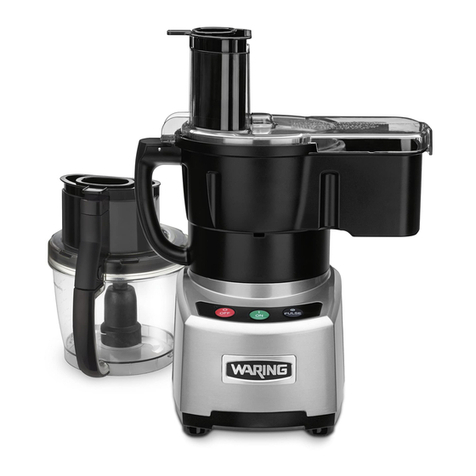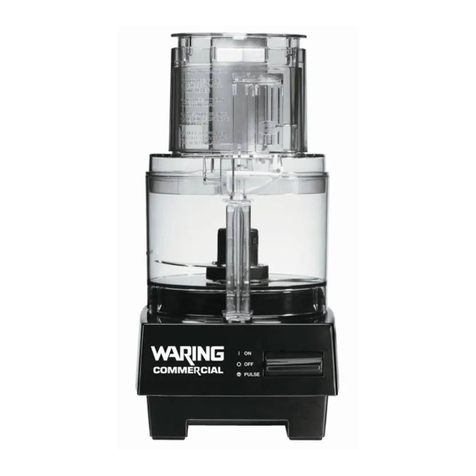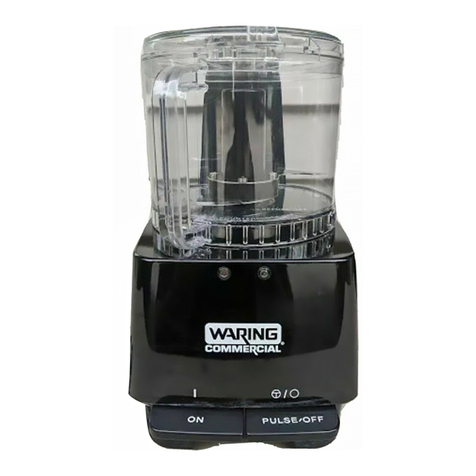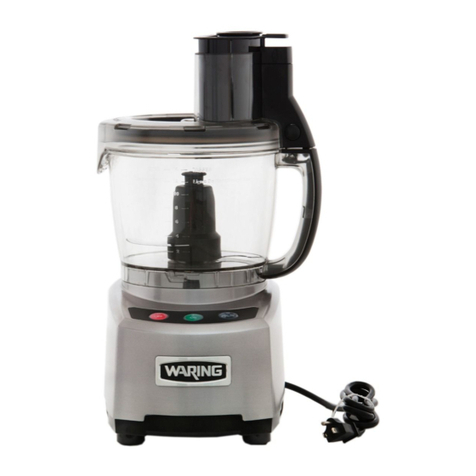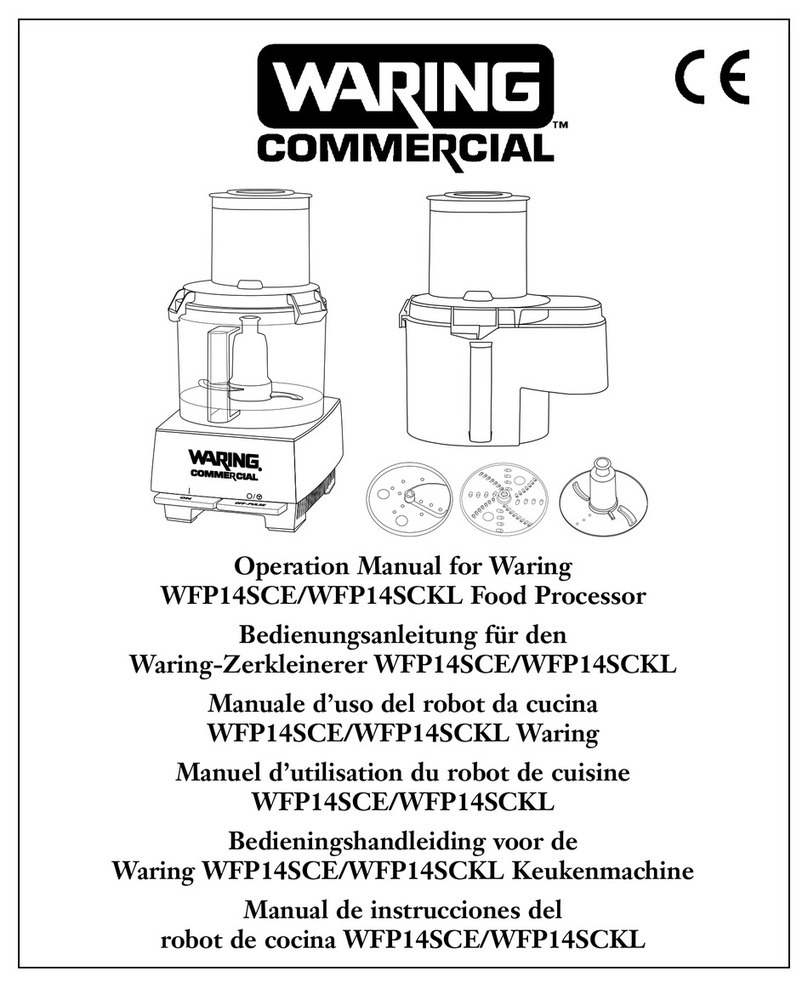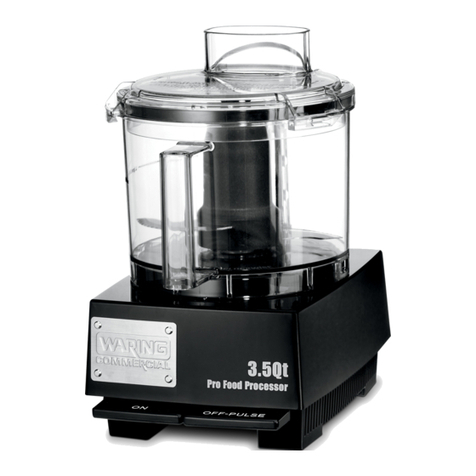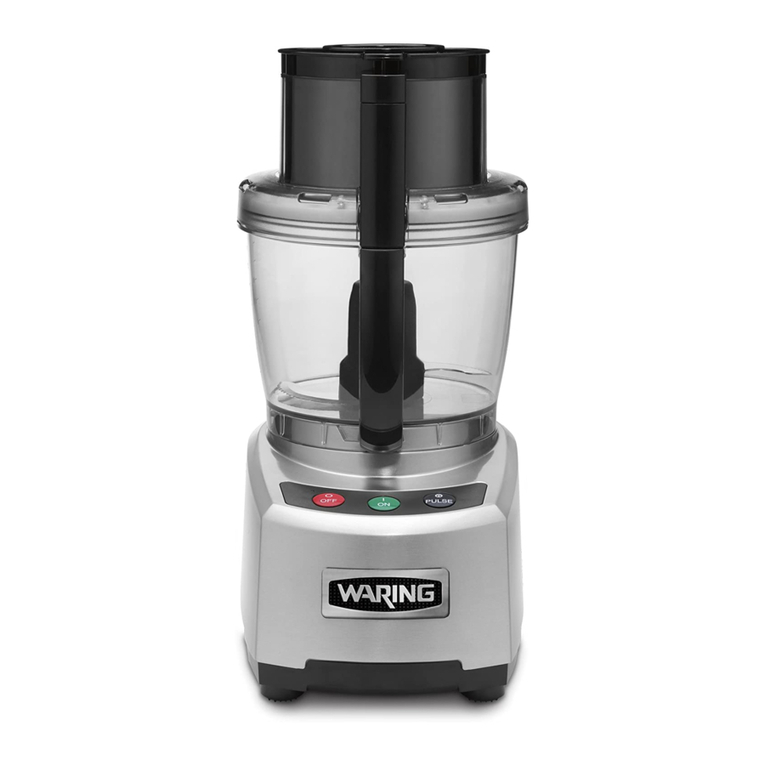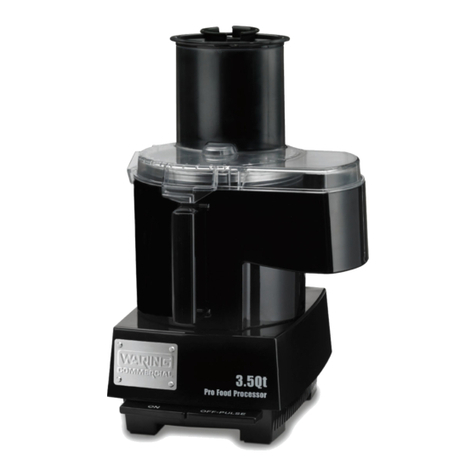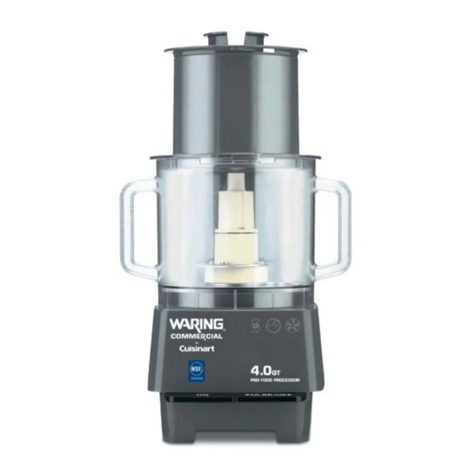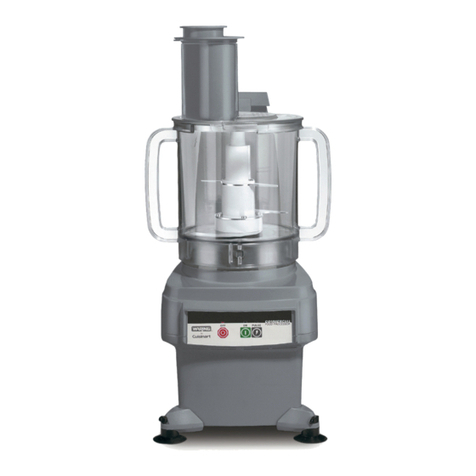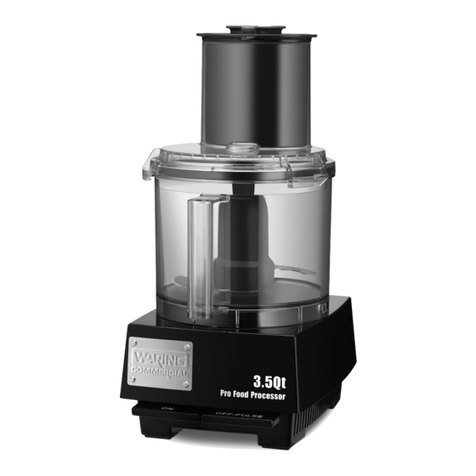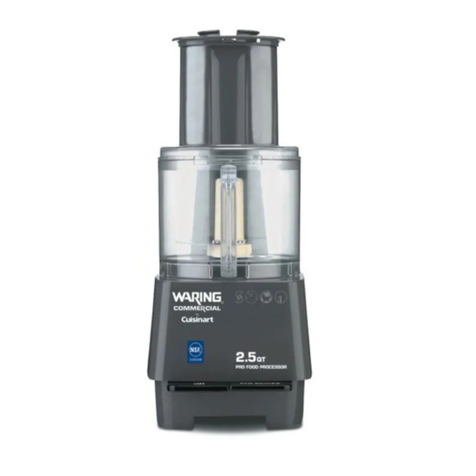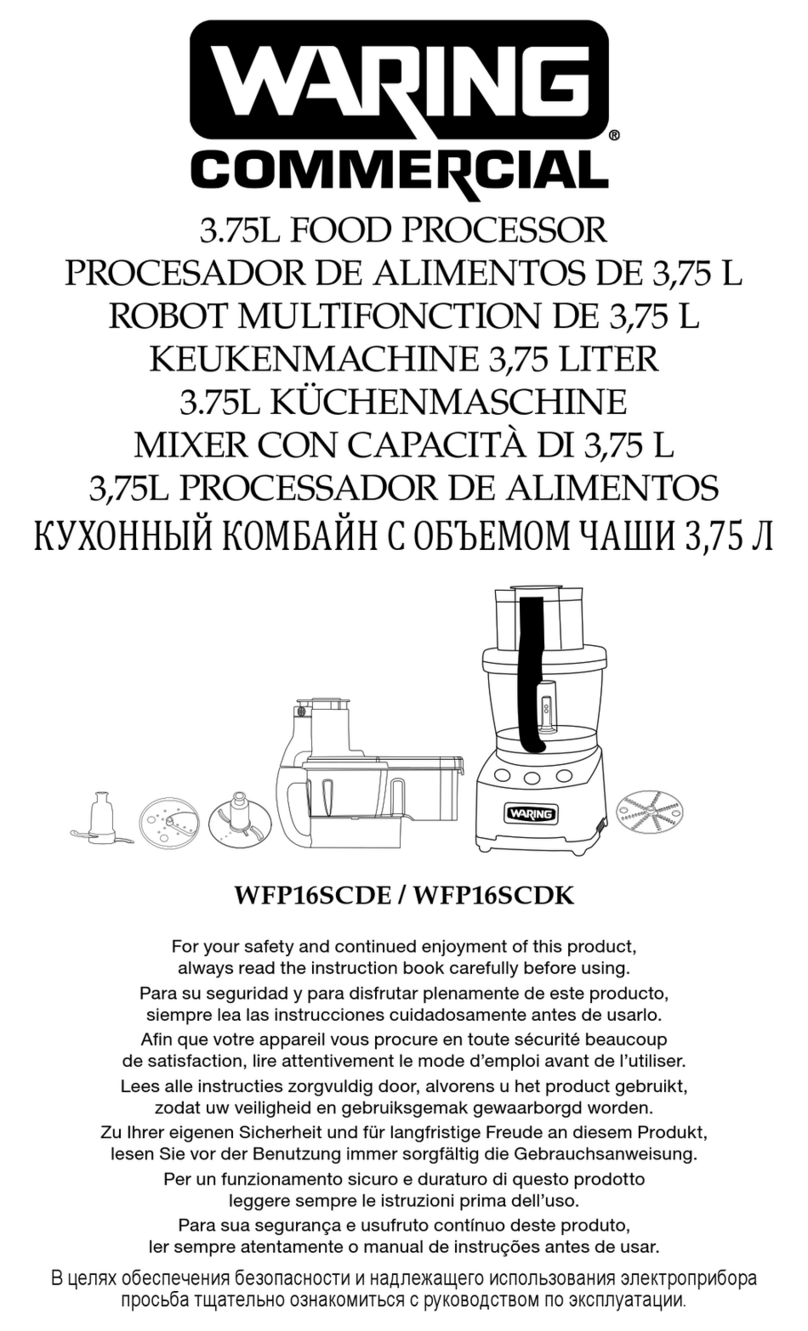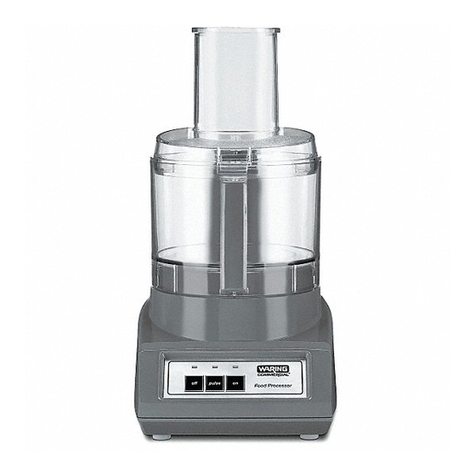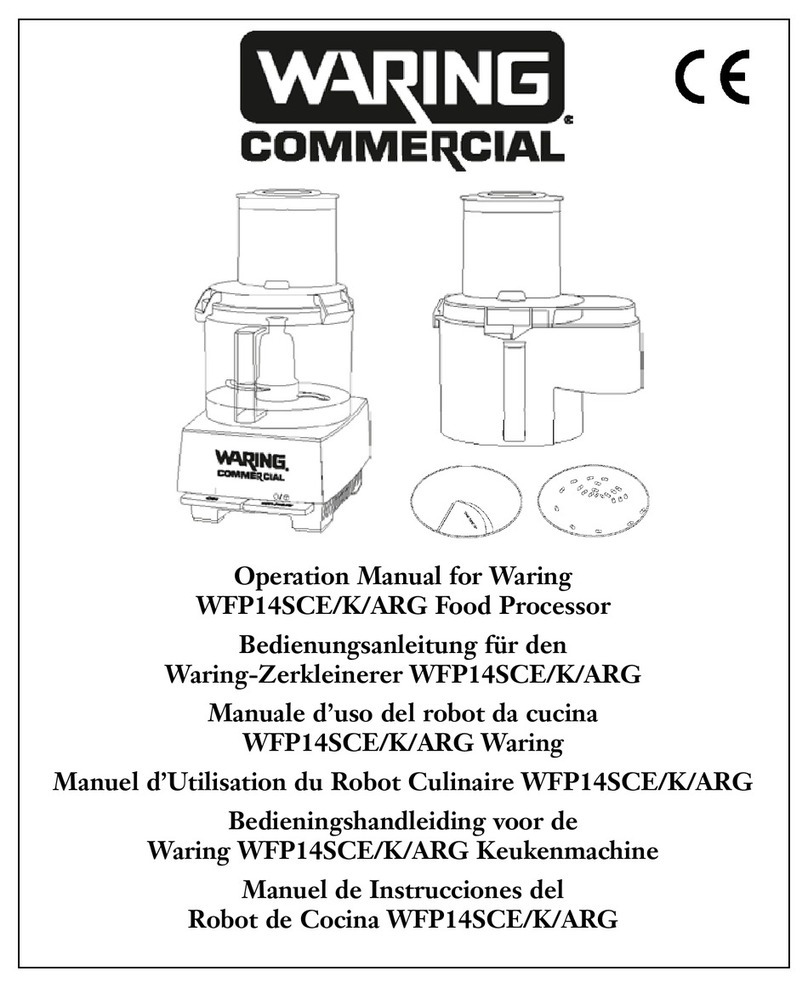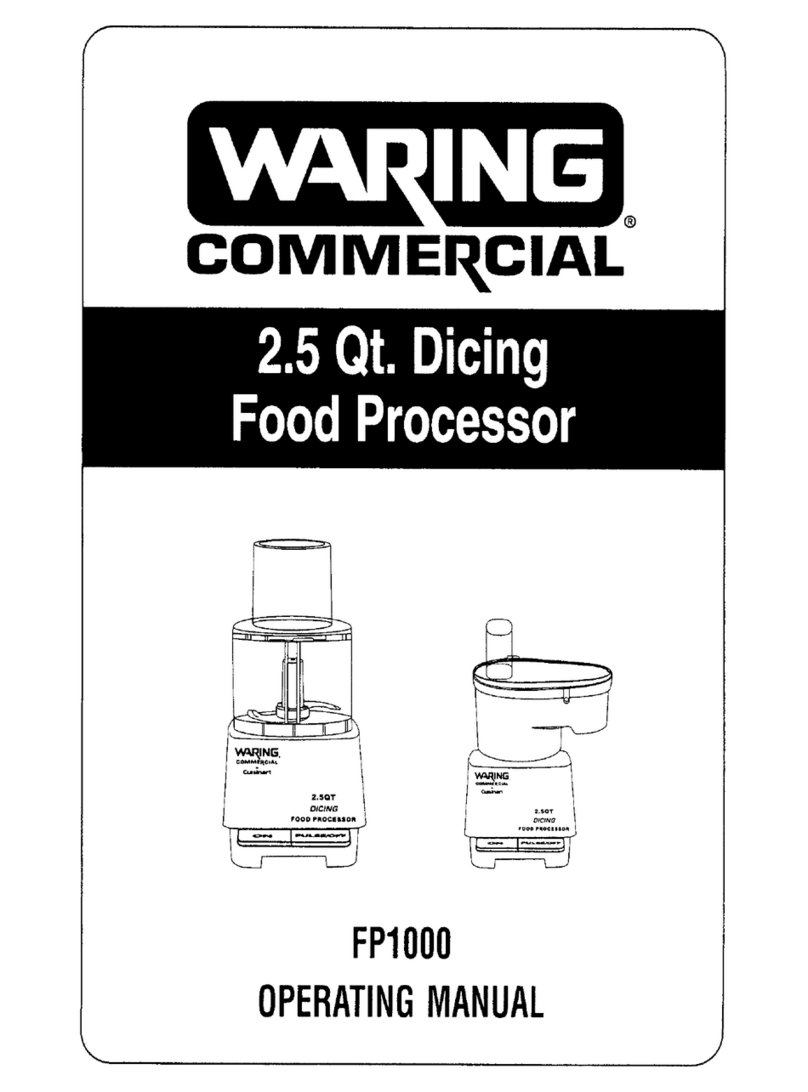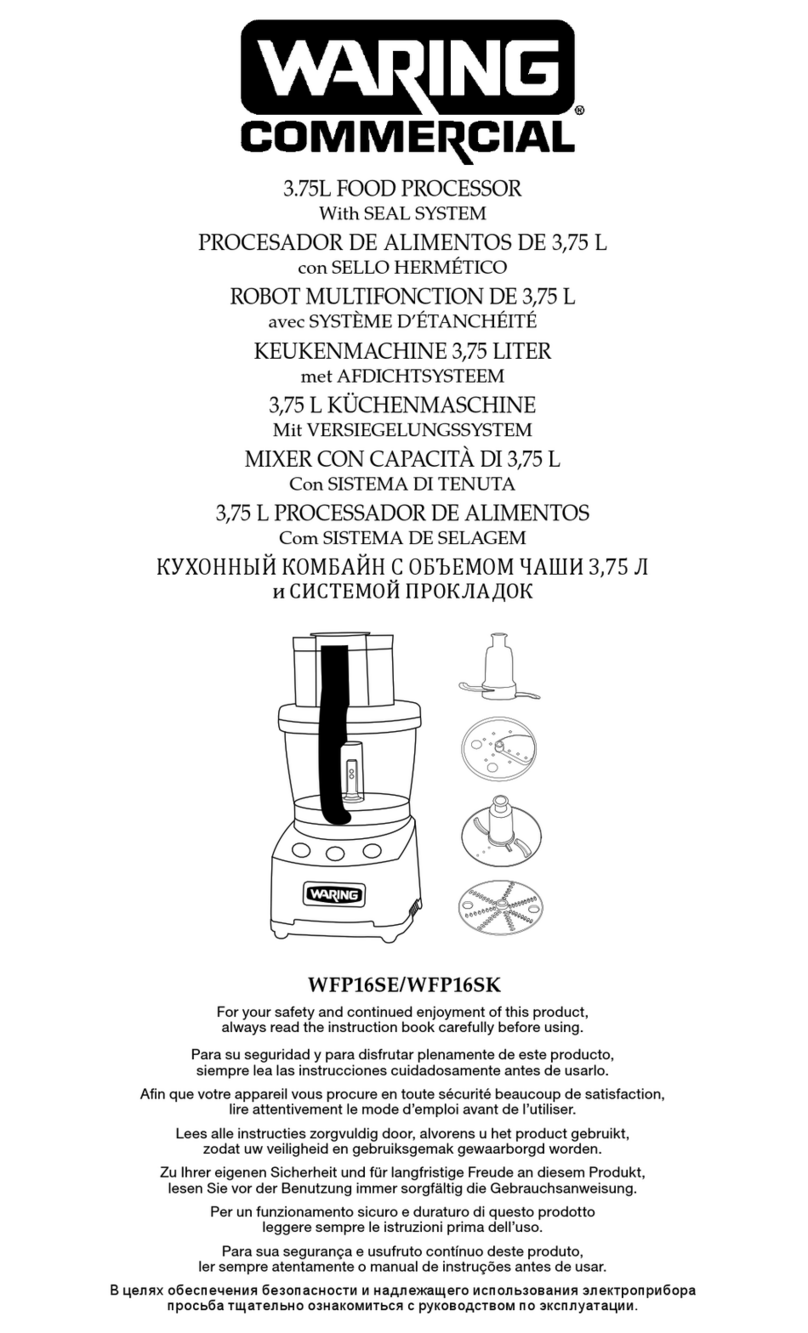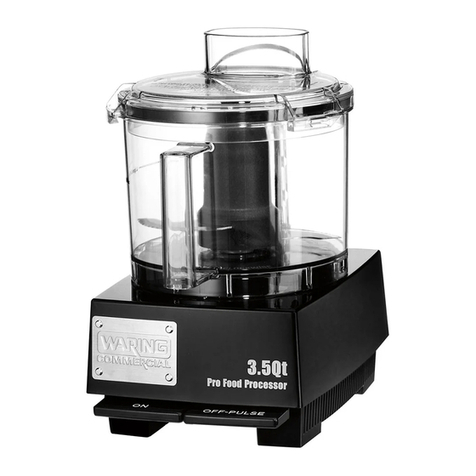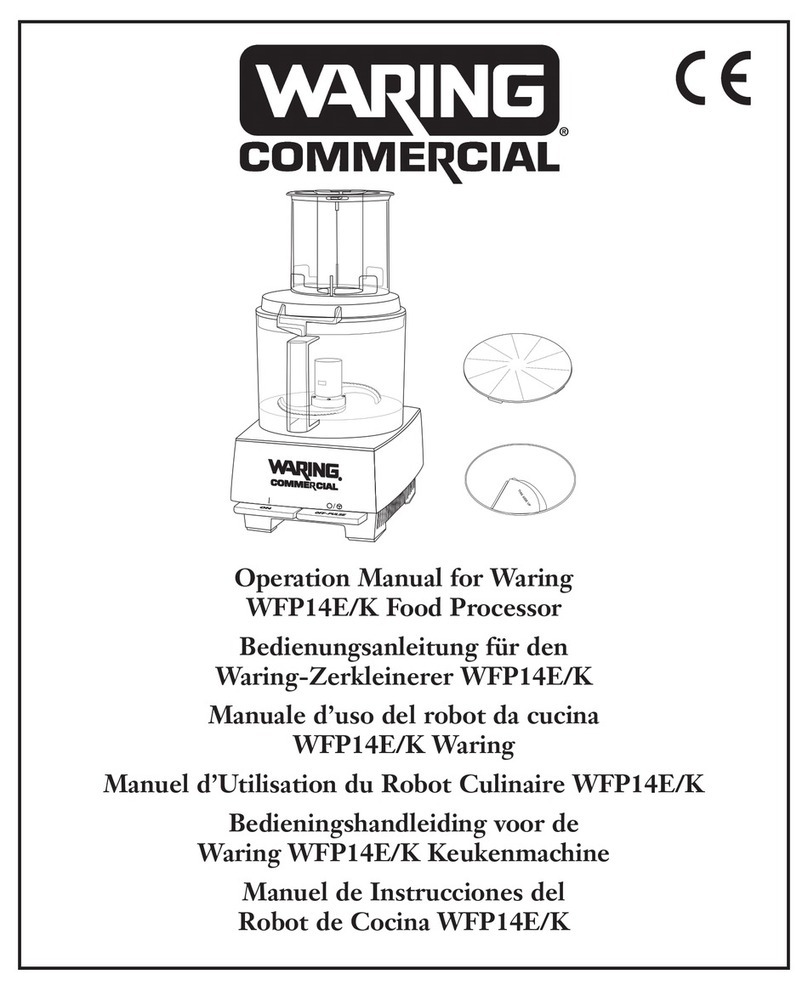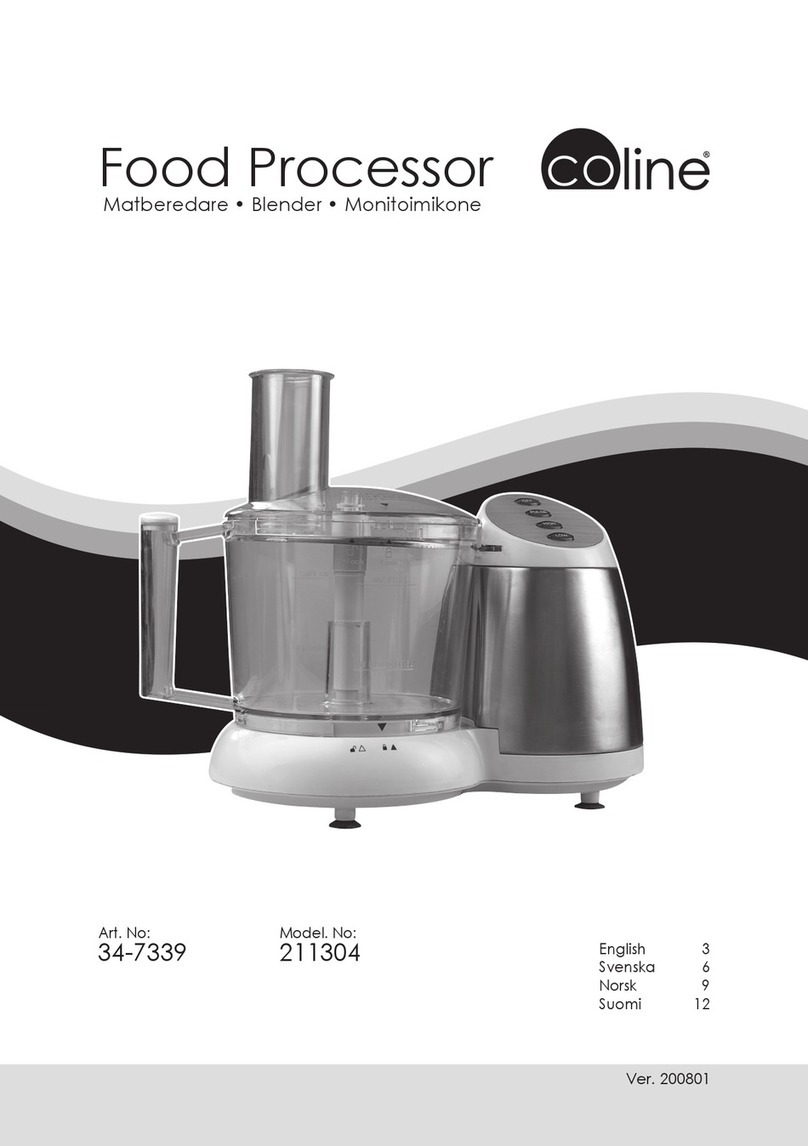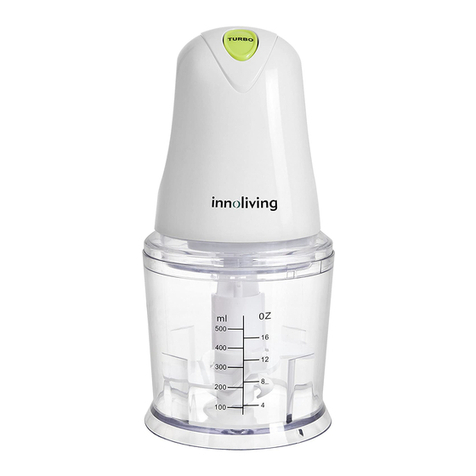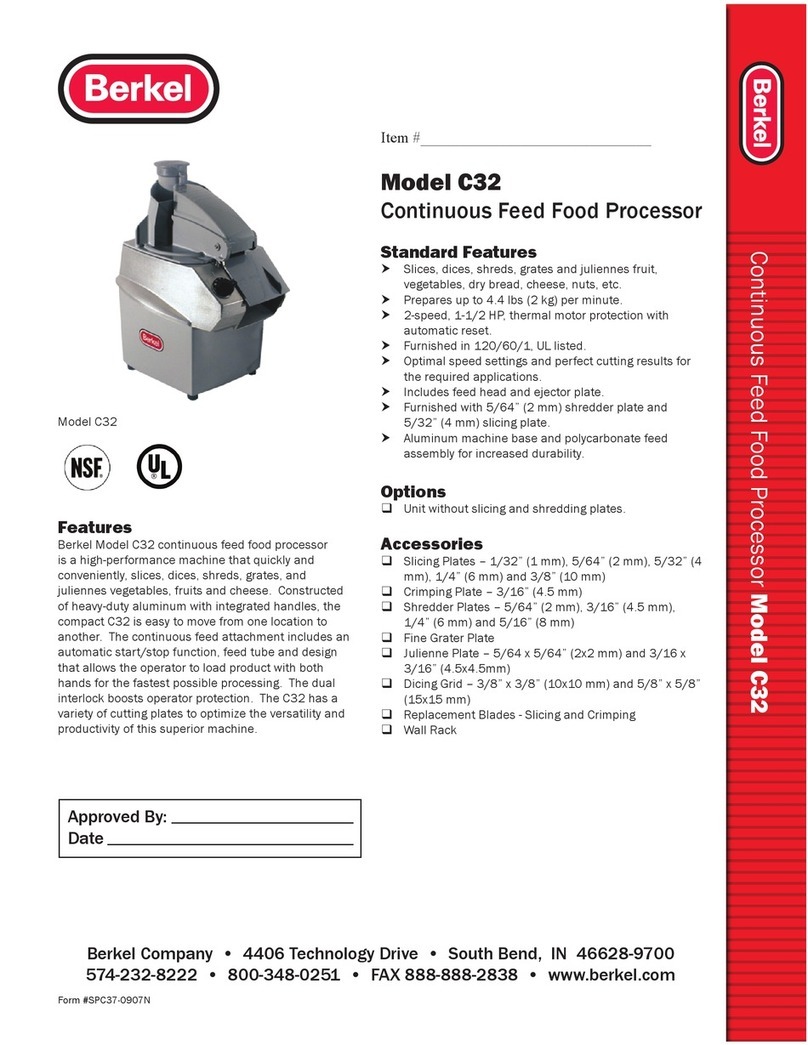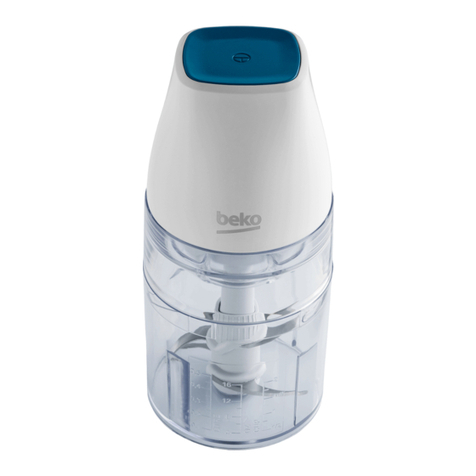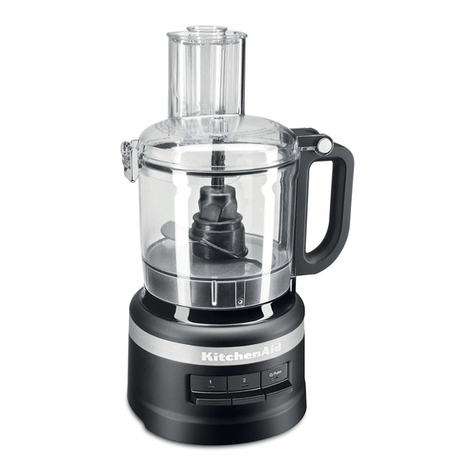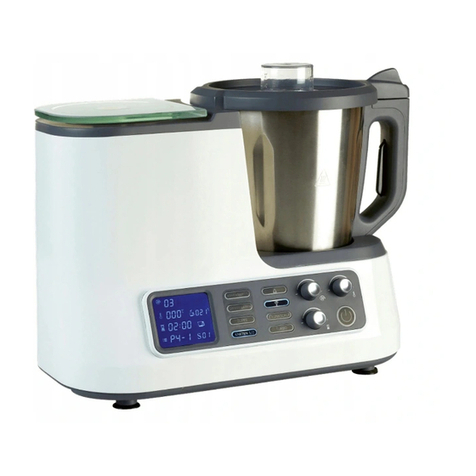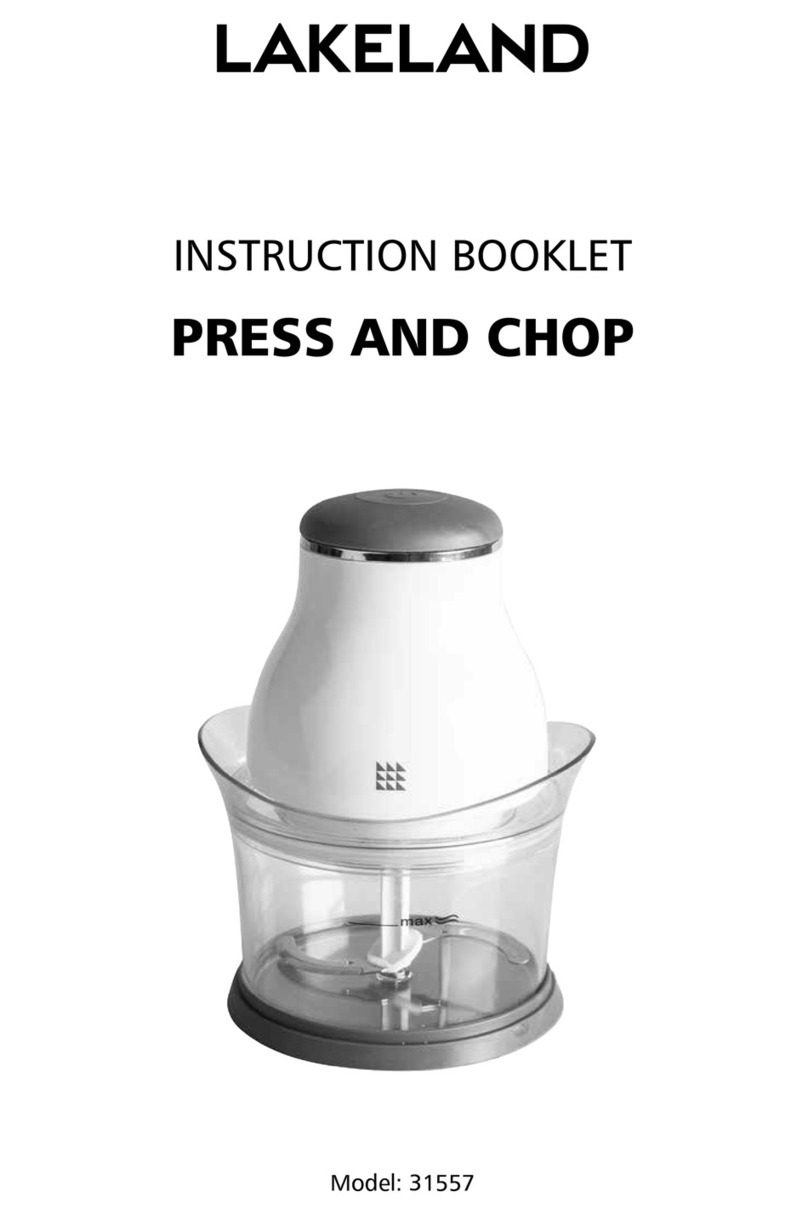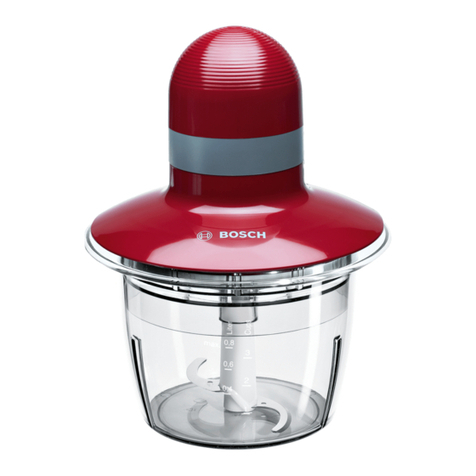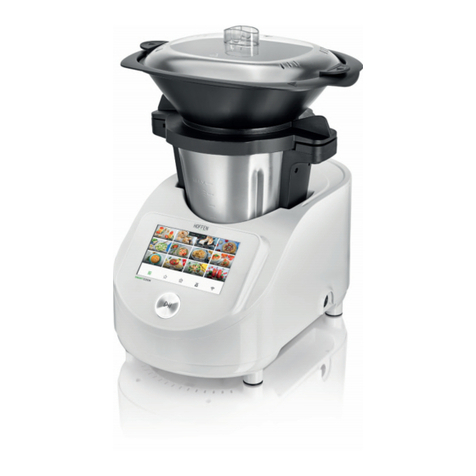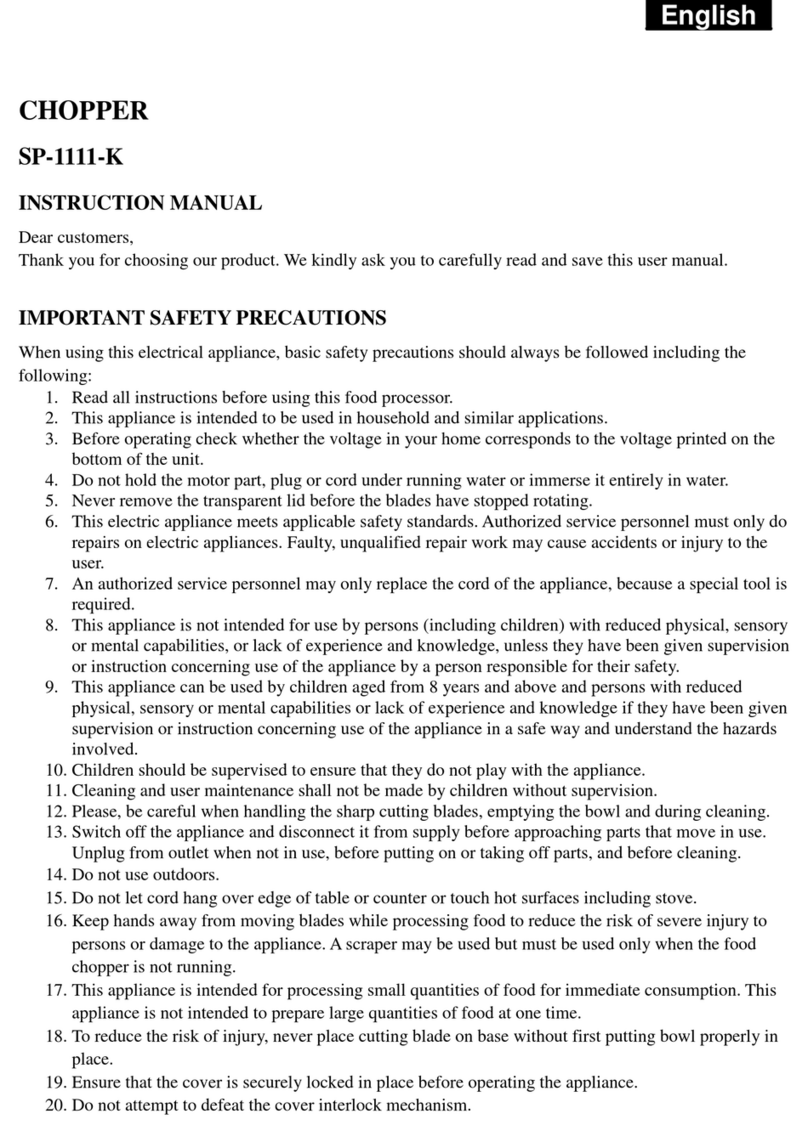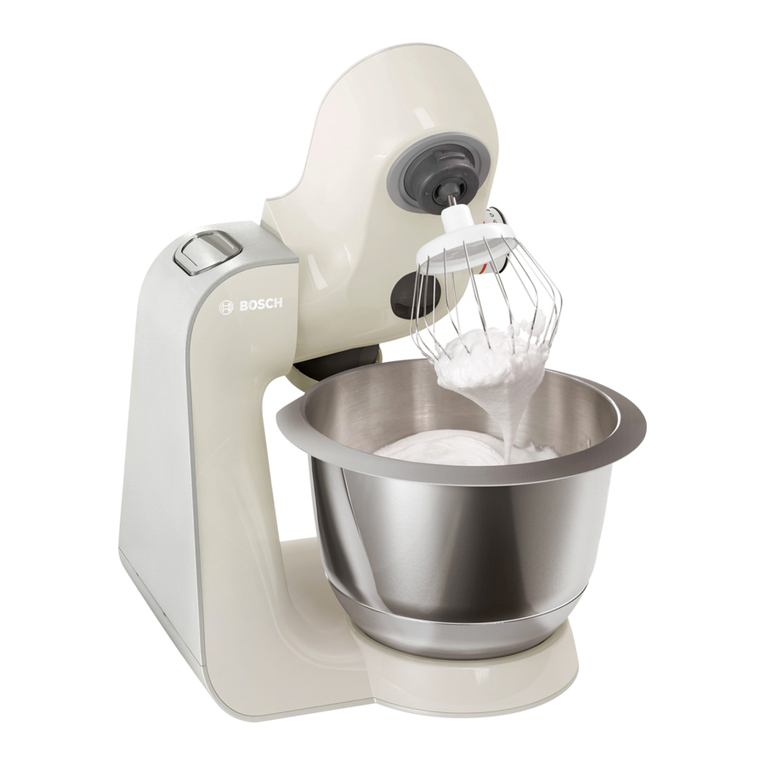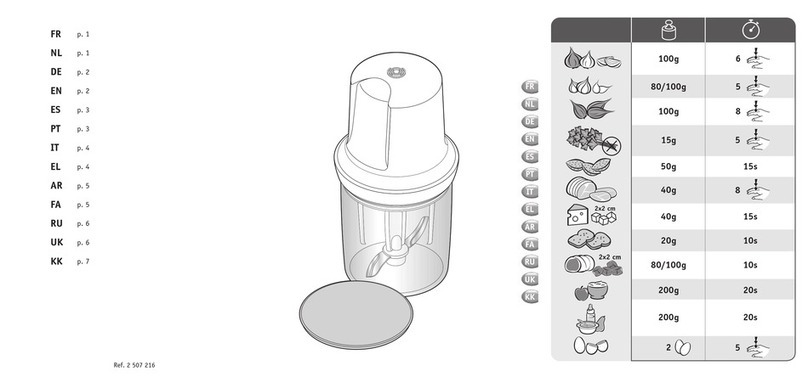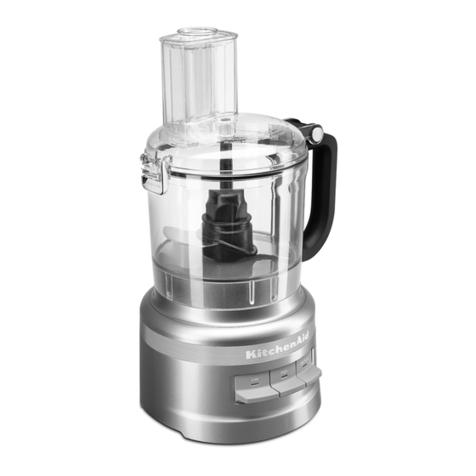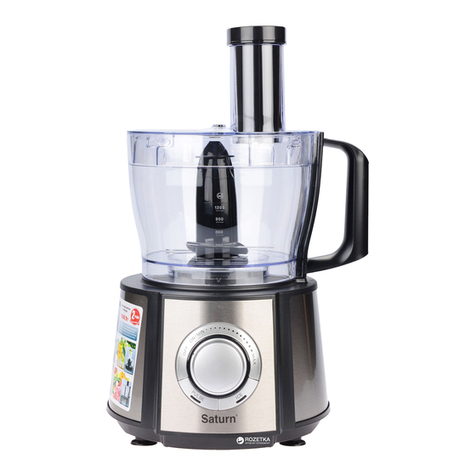
• Do not ll liquid past “Max liquid ll” level. If too much liquid is
used, it will overow. In this case, stop operation, remove liquid to
below “Max liquid ll” line and continue.
Read this if assembling batch bowl parts to use accessory
discs in batch bowl.
• Do not put any food in the bowl before placing the accessory disc
onto the shaft.
• Select the appropriate accessory disc: shredding disc or slicing
disc.
For disc assembly using detachable disc stem (10), hold the disc
with the cutting side facing your hand. Be careful not to scrape
your hand on the sharp edges. Notice the bottom of the disc has a
plastic receptacle for the detachable stem. Holding the stem with
your thumb on the release switch, place the center and right-most
two tabs in the two open slots on the bottom of the disc and rotate
clockwise. Refer to diagram.
• For disc assembly using detachable disc stem (11)
hold the disc with the cutting side facing your hand.
Be careful not to scrape your hand on the sharp
edges. Notice the bottom of the disc has a plastic
receptacle for the detachable stem. Push the disc
stem into the receptacle, lining up the notches at the
end. Refer to the diagram.
• Once the stem is installed in the proper disc,
carefully guide the center disc hub over the metal
shaft so the double ats on the shaft line up with the
disc stem. Put the disc on the top of the shaft and
rotate until it drops down into place. Be sure it is
pushed down as far as it will go. Push on the outside
rim only; never touch the cutting blades. If should
easily drop into place, but if not, then gently rock it
back and forth until you feel the disc drop into place.
Note: Do not put any food in the bowl before placing the
accessory disc onto the shaft.
• Place the cover on the bowl, with the feed tube on the right, slightly
toward the front. The locking tabs on the cover should be at the left
of the locking tabs on the rim of the work bowl.
• Rotate the cover counterclockwise to lock it into place. When the
cover is rotated into place, the safety interlock tab on the back rim
of the cover will lock with the interlock mechanism.
U
N
L
O
C
K
L
O
C
K
9
